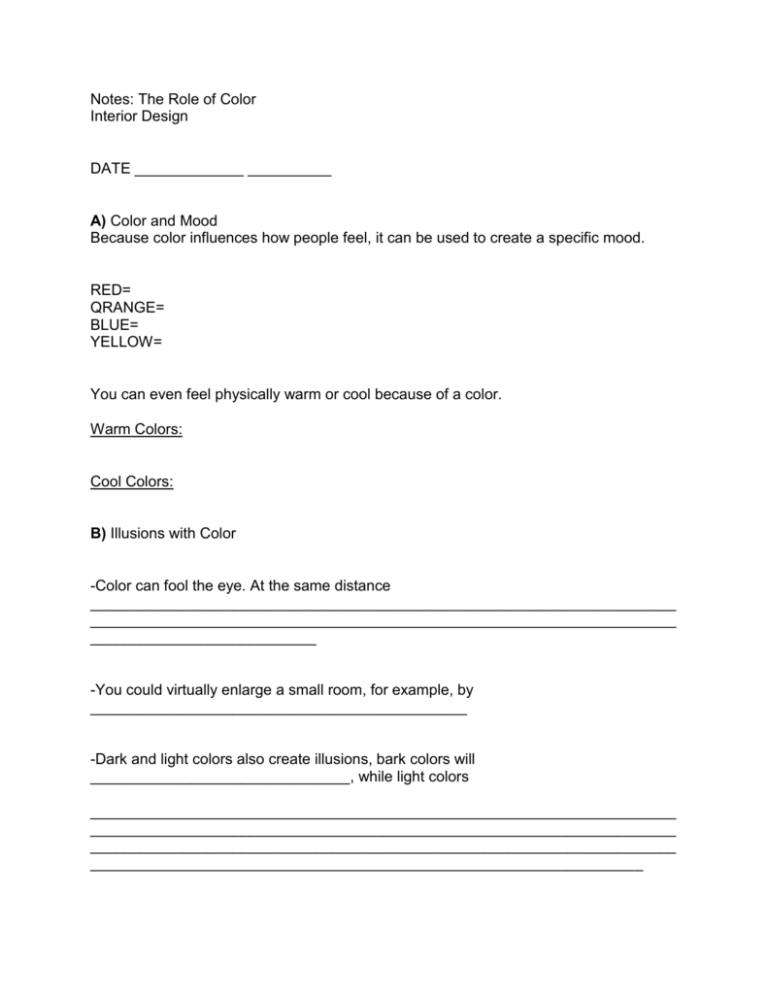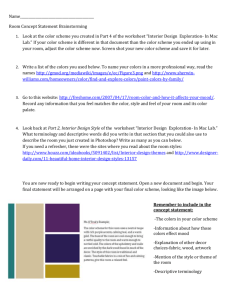Roll of Color
advertisement

Notes: The Role of Color Interior Design DATE _____________ __________ A) Color and Mood Because color influences how people feel, it can be used to create a specific mood. RED= QRANGE= BLUE= YELLOW= You can even feel physically warm or cool because of a color. Warm Colors: Cool Colors: B) Illusions with Color -Color can fool the eye. At the same distance ______________________________________________________________________ ______________________________________________________________________ ___________________________ -You could virtually enlarge a small room, for example, by _____________________________________________ -Dark and light colors also create illusions, bark colors will _______________________________, while light colors ______________________________________________________________________ ______________________________________________________________________ ______________________________________________________________________ __________________________________________________________________ C) Understanding Color What is color? -Color is a ____________________. Light is made up of energy rays _________________________. Each wavelength is a different color. When _______________ ______________________________________ the rays are bent. Because each wavelength bends a different amount (because they are different lengths), the light is separated into its component colors_________________ **This display is called the visible spectrum** -All colors contain pigments: Ex: When you see a red pillow, all the rays in the light are absorbed except the red rays. The red rays bounce off the surface of the pillow to your eyes, and you see the pillow as red. -If no light is reflected= -If all light is reflected= D) The Color Wheel 1) Primary Colors 2) Secondary Colors 3) Tertiary Colors (Intermediate) E) The Language of Color People have developed a few specific terms to refer to the different qualities of color. HUE= INTENSITY= VALUE= F) Color Schemes 1) Monochromatic 2) Analogous 3) Complementary 4) Split Complementary 5) Triadic 6) Neutral Accented Neutral Roy G. Biv is a mnemonic for the sequence of hues in the visible spectrum and in rainbows: • Red • Orange • Yellow • Green • Blue • Indigo • Violet A rainbow spans a continuous spectrum of colors; the distinct bands are an artifact of human color vision. In Roy G. Biv, the colors are arranged in the order of decreasing wavelengths, with red being 650 and violet being about 400 nm. The reverse VIBGYOR is used in many Commonwealth countries 12. Complete the color wheel below with the appropriate colors. Indicate if the color is a primary, secondary, or intermediate color.






